
Amateur astronomy is a hobby where participants enjoy observing or imaging celestial objects in the sky using the unaided eye, binoculars, or telescopes. Even though scientific research may not be their primary goal, some amateur astronomers make contributions in doing citizen science, such as by monitoring variable stars, double stars, sunspots, or occultations of stars by the Moon or asteroids, or by discovering transient astronomical events, such as comets, galactic novae or supernovae in other galaxies.

Helen Battles Sawyer Hogg was an American-Canadian astronomer who pioneered research into globular clusters and variable stars. She was the first female president of several astronomical organizations and a scientist when many universities would not award scientific degrees to women. Her scientific advocacy and journalism included astronomy columns in the Toronto Star and the Journal of the Royal Astronomical Society of Canada. She was considered a "great scientist and a gracious person" over a career of sixty years.

The Dominion Astrophysical Observatory, located on Observatory Hill, in Saanich, British Columbia, was completed in 1918 by the Canadian government. The Dominion architect responsible for the building was Edgar Lewis Horwood. The main instrument is the 72-inch-aperture (1.83 m) Plaskett telescope, proposed and designed by John S. Plaskett in 1910 with the support of the International Union for Cooperation in Solar Research.

The David Dunlap Observatory (DDO) is an astronomical observatory site in Richmond Hill, Ontario, Canada. Established in 1935, it was owned and operated by the University of Toronto until 2008. It was then acquired by the city of Richmond Hill, which provides a combination of heritage preservation, unique recreation opportunities and a celebration of the astronomical history of the site. Its primary instrument is a 74-inch (1.88 m) reflector telescope, at one time the second-largest telescope in the world, and still the largest in Canada. Several other telescopes are also located at the site, which formerly also included a small radio telescope. The scientific legacy of the David Dunlap Observatory continues in the Dunlap Institute for Astronomy & Astrophysics, a research institute at the University of Toronto established in 2008.
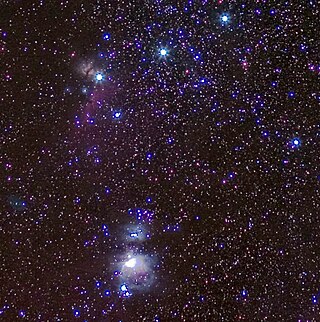
A deep-sky object (DSO) is any astronomical object that is not an individual star or Solar System object. The classification is used for the most part by amateur astronomers to denote visually observed faint naked eye and telescopic objects such as star clusters, nebulae and galaxies. This distinction is practical and technical, implying a variety of instruments and techniques appropriate to observation, and does not distinguish the nature of the object itself.

The Royal Observatory, Edinburgh (ROE) is an astronomical institution located on Blackford Hill in Edinburgh. The site is owned by the Science and Technology Facilities Council (STFC). The ROE comprises the UK Astronomy Technology Centre (UK ATC) of STFC, the Institute for Astronomy of the School of Physics and Astronomy of the University of Edinburgh, and the ROE Visitor Centre.

The Allan I. Carswell Astronomical Observatory, formerly known as the York University Astronomical Observatory, is an astronomical observatory owned and operated by York University. It is located in the North York district of Toronto, Ontario, Canada. Opened in 1969, York's observatory is opened to both researchers and amateur astronomers. The observatory was renamed the Allan Ian Carswell Astronomical Observatory in 2017 after York University Emeritus Professor of Physics Allan Carswell.
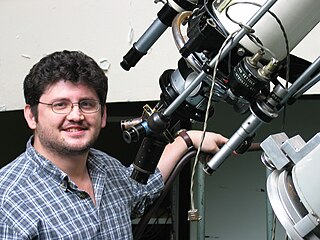
Roberto Abraham, FRSC is a Canadian astronomer and is Professor of Astronomy at the University of Toronto and a Fellow of the Royal Society of Canada.
Cyril G. Wates was an author, mountain climber, and amateur astronomer who lived in Edmonton, Alberta, Canada.
John "Jack" Borden Newton is a Canadian astronomer, best known for his publications and images in amateur astrophotography.
Paul Boltwood was a Canadian amateur astronomer. He was engaged in developing hardware and software for deep sky imaging and in research of brightness variations in active galactic nuclei. He was also acknowledged for his studies of near-nucleus activity in Comet Hyakutake.
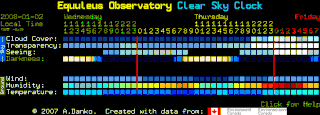
Clear Sky Charts are web graphics which deliver weather forecasts designed specifically for astronomers. They forecast the cloud cover, transparency and astronomical seeing, parameters which are not forecast by civil or aviation forecasts. They forecast hourly data, but are limited to forecasting at most 48 hours into the future. Each individual chart provides data for only a 9 mile radius, and so are essentially point forecasts. There are clear sky chart forecasts for over 6100 locations, though the coverage area is limited to Canada, the USA and parts of Mexico and the Caribbean. Locations are typically cities, professional and public observatories, colleges and science centers. However there are also clear sky charts for star parties and backyard observatories.

Sutherland Astronomical Society Incorporated (SASI) is an amateur astronomical society based in the Sutherland Shire, in the southern suburbs of Sydney, Australia. It operates the Green Point Observatory, it is one of the two founding organizations of the National Australian Convention of Amateur Astronomers, and its members have discovered two comets and two novae.
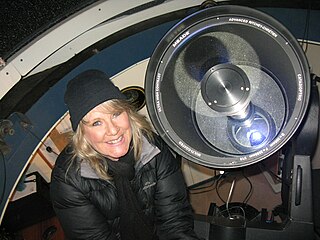
Jennie Margaret McCormick, FRASNZ is a New Zealand amateur astronomer and asteroid discoverer who conducts astronomical research from the Farm Cove Observatory in Auckland. She discovered the asteroid officially named New Zealand and has contributed to and been involved in a range of organisations and events to promote astronomy. McCormick has published in several journals and won awards for her contributions to astronomy.
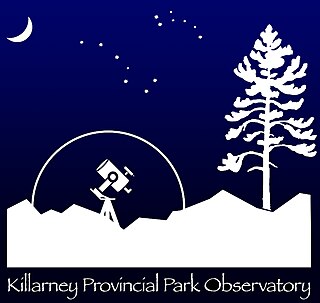
The Killarney Provincial Park Observatory is an astronomical observatory located at the George Lake Campground of Killarney Provincial Park . The Observatory is operated by Ontario Parks and houses two observatory buildings. The original facility contains a 10" telescope with solar filter, ideal for nighttime as well as daytime viewing of the Sun. The newer facility contains a 16" fully automated telescope with a 5" refractor and is ideal for research, astrophotography and public use. The telescopes are available for Discovery programs as well as private sign-out (self-use) by interested visitors.
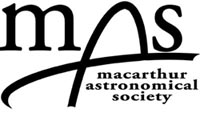
Macarthur Astronomical Society is an organisation of amateur astronomers, based in the Macarthur Region of outer South Western Sydney, New South Wales, Australia.

The Astronomical Society of Glasgow (ASG) was founded in 1954 in Glasgow, Scotland, by amateur astronomers and is dedicated to promoting an interest in Astronomy.
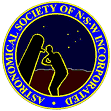
The Astronomical Society of New South Wales (ASNSW) is an amateur astronomy club in the state of New South Wales, Australia. Founded in 1954, the society currently has over 400 members.
The Dunlap Institute for Astronomy and Astrophysics at the University of Toronto is an astronomical research centre.

Ruth Josephine Northcott was a Canadian astronomer based at the David Dunlap Observatory, and president of the Royal Astronomical Society of Canada from 1962 to 1964. Asteroid 3670 Northcott is named for her.















